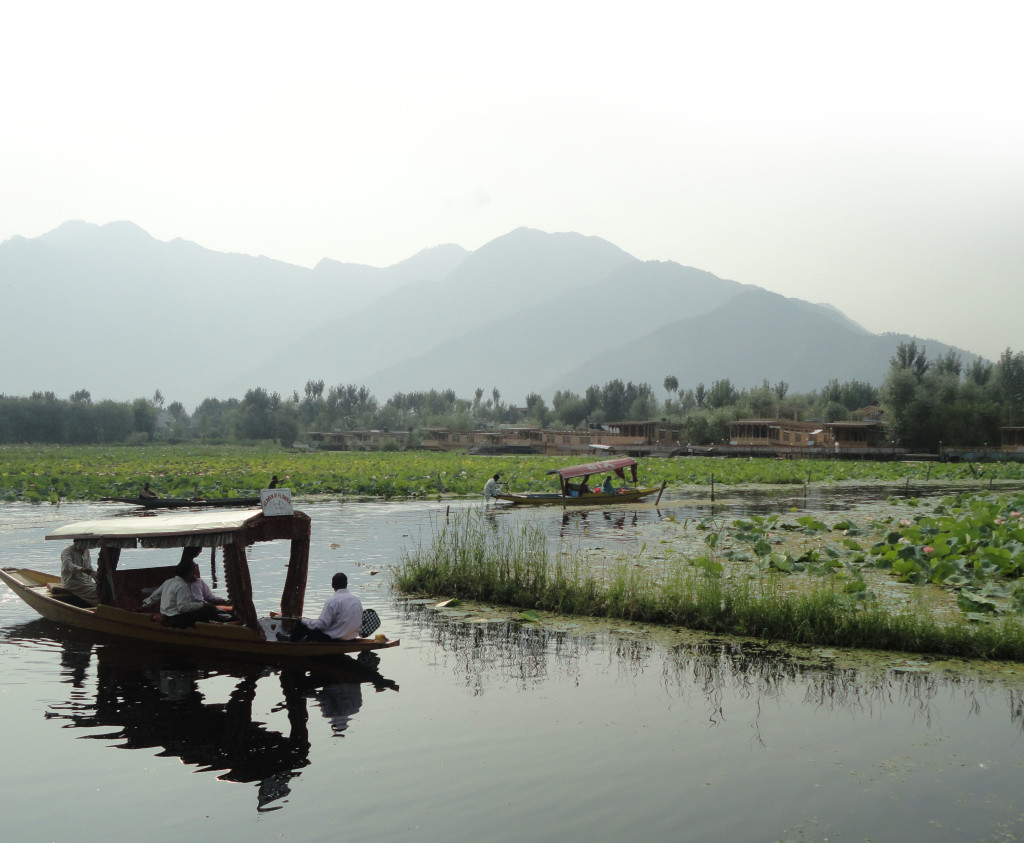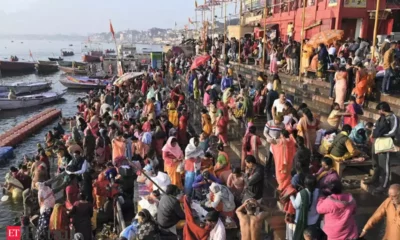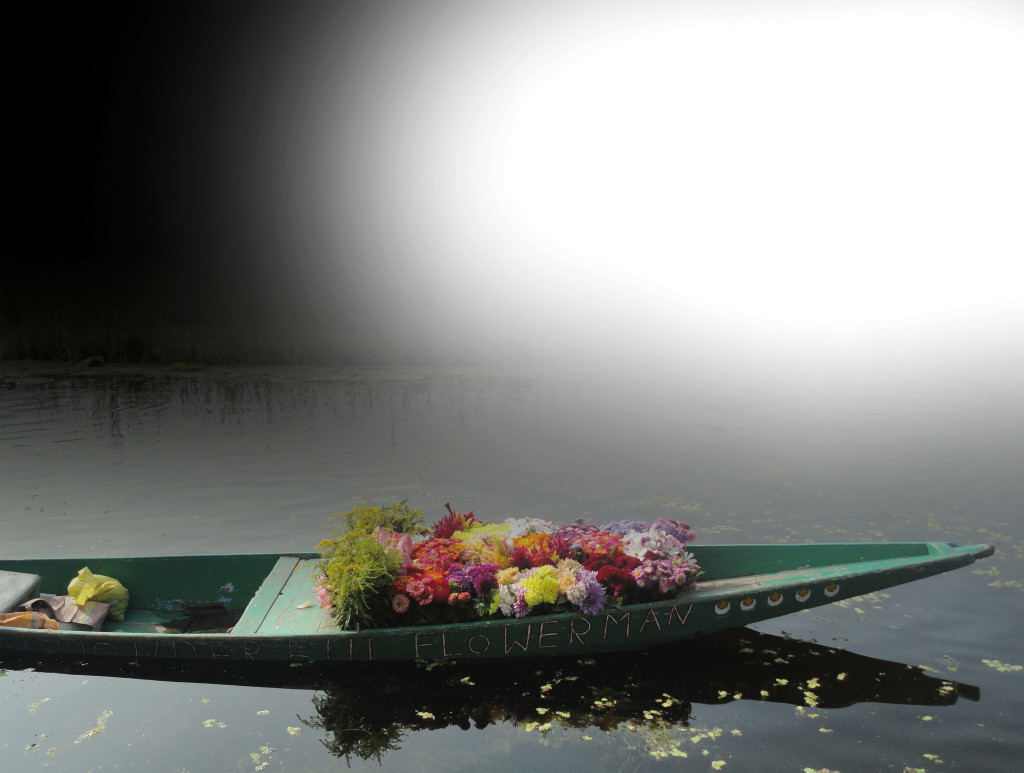News
PREFABBING A PARADISE




The time-tested module of prefabricated housing is now being considered the most logical option for speedy and mass housing requirement in Kashmir. Though the Assembly elections in Jammu and Kashmir have temporarily diverted the focus from the misery inflicted by the flash floods, the need for rebuilding and rehabilitation is not just acute but urgent since the winter chill has already set in.
Presently, the single most requirement of a poor Kashmiri flood-victim is a tiny dwelling unit and then, of course, a firan to withstand the cold winds which have begun to lash the Valley.
Prefab housing or readying parts of a building at one place and reassembling these on site, caught on as a practice ever since a London carpenter, Henry Manning, constructed a house that built in components which was then shipped and assembled by British emigrants in 1837. While it got popular during the Gold Rush in the US, it was during the Second World War that the practice really came on to its own. In United Kingdom, classrooms were popular with schools during the baby boom of the fifties and sixties.
A preliminary Government assessment of cumulative losses due to floods in Jammu and Kashmir has been put at over 1,00,000 crore with more than 3.50 lakh structures-mostly residential houses-being damaged in the floods. More than 83,000 ‘pucca’ houses have been fully damaged while 96,089 such houses have suffered partial damage. Similarly,
21,162 ‘kucha’ houses have been fully damaged while 54,264 such houses have been partially damaged.
Retired Chief Engineer Tanvir Malik who now works for an NGO – CHINAR Kashmir which is headlong into the relief work in Kashmir-told Realty&More:
“We have a large requirement of houses of approximately 260 square feet each in villages in which a family of four can fit in. And the requirement is rather urgent as the winter has already set in and these poor flood victims have no place to cover their heads under”.
Since the NGO comprises mostly retired technocrats, Malik said CHINAR Kashmir on its own “has been doing some kind of prefab housing at the site itself”. It has been costing them around 1.5 lakh per unit. He added that the materialbeing used for flooring etc can be reused.
Malik, who retired in 2008 from the J&K Power Development Corporation, is angry with the Government machinery. “They didn’t act on time even though they had an alarm when it happened in Anantnag seven days ago.”
GM Shah Foundation, another social service organisation deeply involved with the relief work in the Valley, has also made housing for the poor victims as its priority area in view of the impending freezing conditions in the Valley.
Muzzafar Shah, son of former Chief Minister GM Shah, who is spearheading the work of the Foundation, is quite convinced about prefab being the right answer to the present-day requirements in Kashmir. A former Tata Steel executive, Shah is tapping his corporate connections worldwide to zero in on to the company that can deliver the best at the cheapest cost. Among the various offers, there are a few from the neighbouring China.
Prefabs may not necessarily be the only preferred option for housing requirements in the Valley, but besides the NGO and social help groups working for the poor masses,a section of the well-to-do are also giving the module a serious thought. It’s worth mentioning that the floods had severely inundated the posh and elite areas in the Valley, like Rajbagh, Jawahar Nagar and Wazirbagh etc. Most of the houses in these areas are now partially or fully damaged. While cost may not be the prime factor for the affected residents of such colonies, time certainly is. Since many damaged houses have to be totally pulled down and built afresh, the hurry for a replacement may force many of them to go for the prefab option.
Longevity of such structures should not come in the way of settling for the prefab option as historical data shows that many buildings which were designed post the World War with a five-ten year life span have far exceeded this, with a number of these still surviving. Another factor which may make the posh areas’ residents to zero in on this option is that architects are incorporating modern designs into the prefabricated houses of today.
Prefab housing can no longer be compared to a mobile home in terms of appearance, but to that of a complex modernist design. There has also been an increase in the use of ‘green’ material in the construction of these prefab houses. Many prefab houses can be customised to the client’s specific location and climate, making prefab homes much more flexible and modern than before.
Retired Chief Engineer Jatender Bakshi who was Superintending Engineer (Floods) in the Valley in
1987 is, however, not much enthused with the idea of prefab housing finding favour in Kashmir. ‘Gypsy huts’, as he prefers to call such houses, are only a temporary solution, he said. “They are only meant for the Army or the BSF. No Kashmiri would like to live in these,” he said.
Blaming the encroachments on river banks as the main reason for the recent floods, he told Realty & More: “Earlier as soon the Sangam gauge went above a particular level, we used to camp at the site 24×7. From the Maharaja’s time we used to deliberately breach Kandizal below Pampore so that the Srinagar city is saved. During the peak of militancy in 1990, we made four breaches and saved the city”.
Ajaz Rasool, a hydrologist who has worked extensively with the water bodies in Kashmir, is angry with the Government. He told RealitynMore: “It was not something unknown. It was a disaster waiting to happen!” Rasool added that the irrigation and flood control department had done a statistical analysis of flood frequency and studied how the 100-year cycle of floods was going to repeat. “It is a mathematical analysis and as per that, the possibility was definitely there of a repeat. But, of course, we could not anticipate the exact time and season.”
“We have a large requirement of houses of approximately 260 square feet each in villages in which a family of four can fit in. And the requirement is rather urgent as the winter has already set in and these poor flood victims have no place to cover their heads under”.
TANVIR MALlK, CHINAR Kashmir
• The need for rebuilding and rehabilitation is not just acute but urgent since the winter chill has already set in.
• A preliminary Government assessment of cumulative losses due to floods in Jammu and Kashmir has been put at over 1,00,000 crore with more than 3.50 lakh structures-mostly residential houses-being damaged in the floods.
“(prefab houses) are only a temporary solution. They are only meant for the Army or the BSF. No Kashmiri would like to live in these.”
JATENDER BAKSHI, Retired Chief Engineer
“It is a mathematical analysis and as per that, the possibility was definitely there of a repeat. But, of course, we could not anticipate the exact time and season.”
AJAZ RASOOL, Hydrologist
“Housing is the priority area for us in view of the impending freezing conditions in the Valley. Prefab housing is the right option and we are looking at the companies that can deliver the best, at the cheapest cost”.
MUZZAFAR SHAH,GM Shah Foundation
But the critical question is despite the world-wide acceptance and evolution of prefab housing to its present form, does the domestic real estate industry has the requisite technology and the potential to fulfill the large-scale mass housing needs of the flood-ravaged Valley, and that too at a quicker pace? Realty & More contacted some prominent developers and realty experts to get their response on the issue.
Supertech, which claims to be the first company to introduce precast technology in North India and has a manufacturing unit in Greater Noida, is highly enthusiastic about the suitability of prefab housing in the flood-ravaged Valley. Mohit Arora, managing director, Supertech Limited, told Realty & More: “Keeping in mind the destruction caused due to the recent floods, stacking space for construction material as well as construction labour would not be available in the Valley. So, adoption of precast technology is the best way of re-construction in the area.” Also, he said, with the use of this technology, the construction time reduces to 10-15 per cent in comparison to the traditionalway of construction.
At the same time, Arora added: “The concept of precast technology is very new to the Indian real estate market and thus skilled labor in this field is very less. Only a few developers and infrastructure companies have adopted this technology and have set up their plants to manufacture houses, Metro
rails, etc.”
Sounding bullish about Supertech’s capability to handle the job, he said: “The company has set up a state-of-art manufacturing unit in approx 61,000 square meters (15 acres) in Greater Noida. This unit has a production capacity of 5.0 million sq. ft. area per annum where roofs, walls and floors of a precast house can be constructed.”
Said Dhiraj Jain, Director, Mahagun Group: “Pre-fab houses are designed on modular basis and can be erected in a very short span of time using minimum labour skills.” He was also of the opinion that while the bamboo prefab houses are the best alternative of giving cheaper and faster housing in the Valley, another alternative is to reduce the cost of construction using conventional technologies and construction practices. “There are many time-tested and proven technological options which can lead to housing costs being brought down by 15 to 40 per cent, “he told Realty & More. However, he added: “Due to various reasons, there is a major gap between the availability of these technology options and the accessibility of the same in the housing delivery process.”
“Keeping in mind the destruction caused due to the recent floods, stacking space for construction material as well as construction labour would not be available in the Valley. So, adoption of precast technology is the best way of re-construction in the area.”
MOHIT ARORA,MD, Supertech


DHIRAJ JAIN, Director, Mahagun Group
In the past few decades, and especially since the current housing slump, innovations have allowed manufactured homes to cater to a more upscale market, he said. The Mahagun Director sees “wider acceptance at all levels of this technology” and believes that “this will bridge the demand-supply deficit in the country as prefab unleashes engineering and scientifically proven-intelligence and tackle the daunting problems faced by cities worldwide.”
In RG Group MD Rajesh Goyal’s view, prefabricated (cement) houses are the best alternative. “It is cheaper, environment-friendly, quicker, provides quality construction and is resistant against natural disasters.” Regarding the industry’s capability to handle the job, Goyal told Realty & More: “Prefab housing is the need of the hour and real estate industry has always matched steps with changing times.”
Goyal revealed that in the past, the RG Group had built post-catastrophe homes for the Uttarakhand calamity victim families. “We have the expertise to do it again for the Kashmir Valley. “But, he added: “The task of construction is delegated to contractors, so by collaborating with the Government, our company can handle the philanthropic job.”
• GM Shah Foundation is tapping various corporates worldwide to zero in on to the company that can deliver the best at the cheapest cost. Among the various offers, there are a few from the neighbouring China.
• A section of the well-to-do are also giving the module a serious thought. It’s worth mentioning that the floods had severely inundated the posh and elite areas in the Valley, like Rajbagh, Jawahar Nagar and Wazirbagh etc.


RAJESH GOYAL,MD, RG Group
“Although prefabricated construction is being used in the commercial real estate, we are yet to see its prevalence in the residential segment.”
SAHIL KAPOOR, Executive Director, RE/MAX India
• Longevity of such structures should not come in the way of settling for the prefab option as historical data shows that many buildings which were designed post the World War with a five-ten year life span have far exceeded this, with a number of these still surving.
• There has also been an increase in the use of ‘green’ material in the construction of these prefab houses. Many prefab houses can be customised to the client’s specific location and climate, making prefab homes much more flexible and modern than before.
“The-cheapest and the fastest way of providing housing at a large scale in the flood-ravaged region is the prefab”
AK TULSIANI,CMD, Tulsrani Corfstructions and Developers Ltd
However, Sahil Kapoor, Executive Director of RE/MAX India, told Realty & More that prefab housing can at best be “one of the approaches” as it takes less time and is cost effective at the same time. He was of the view that as of now the Indian real estate industry is not well equipped to manufacture prefabricated homes like the Western countries. “We will definitely have to import technology and mechanisms from the Western part of the world”, he said adding that “although prefabricated construction is being used in the commercial real estate, we are yet to see its prevalence in the residential segment.”
Though his own company cannot handle the job, if assigned, AK Tulsiani, CMD of Tulsiani Constructions and Developers Ltd, is confident about the domestic industry’s capability to provide prefab housing in the Valley which is the “best alternative”. He said: “The cheapest and the fastest way of providing housing at a large scale in the flood-ravaged region is the prefab”
-



 News3 weeks ago
News3 weeks agoKW Delhi 6 Mall Onboards New Brands
-



 News3 weeks ago
News3 weeks agoManasum Senior Living Launches IKIGAI GOA, A Senior Living Community in North Goa, in collaboration with Prescon Homes
-



 News2 weeks ago
News2 weeks agoGodrej Properties Sells Rs 3k cr+ Homes of Godrej Zenith, Gurugram, within 3 days
-



 News3 weeks ago
News3 weeks agoBridging India Divide: Top 5 Tier- 2 Cities to Focus On
-



 News3 weeks ago
News3 weeks agoCommercial Realty Gets Tech Savvy: Fast Construction, Enhanced Convenience
-



 News3 weeks ago
News3 weeks agoMultipoint Connection – A Definite Boon
-



 News2 weeks ago
News2 weeks agoRBI’s Status Quo on Key Policy Rates to Help Maintain the Real Estate Growth Momentum, Say Industry Stalwarts
-



 News3 weeks ago
News3 weeks agoSacred Cities See a Retail Boom as Spiritual Tourism Surge: CBRE Report

























